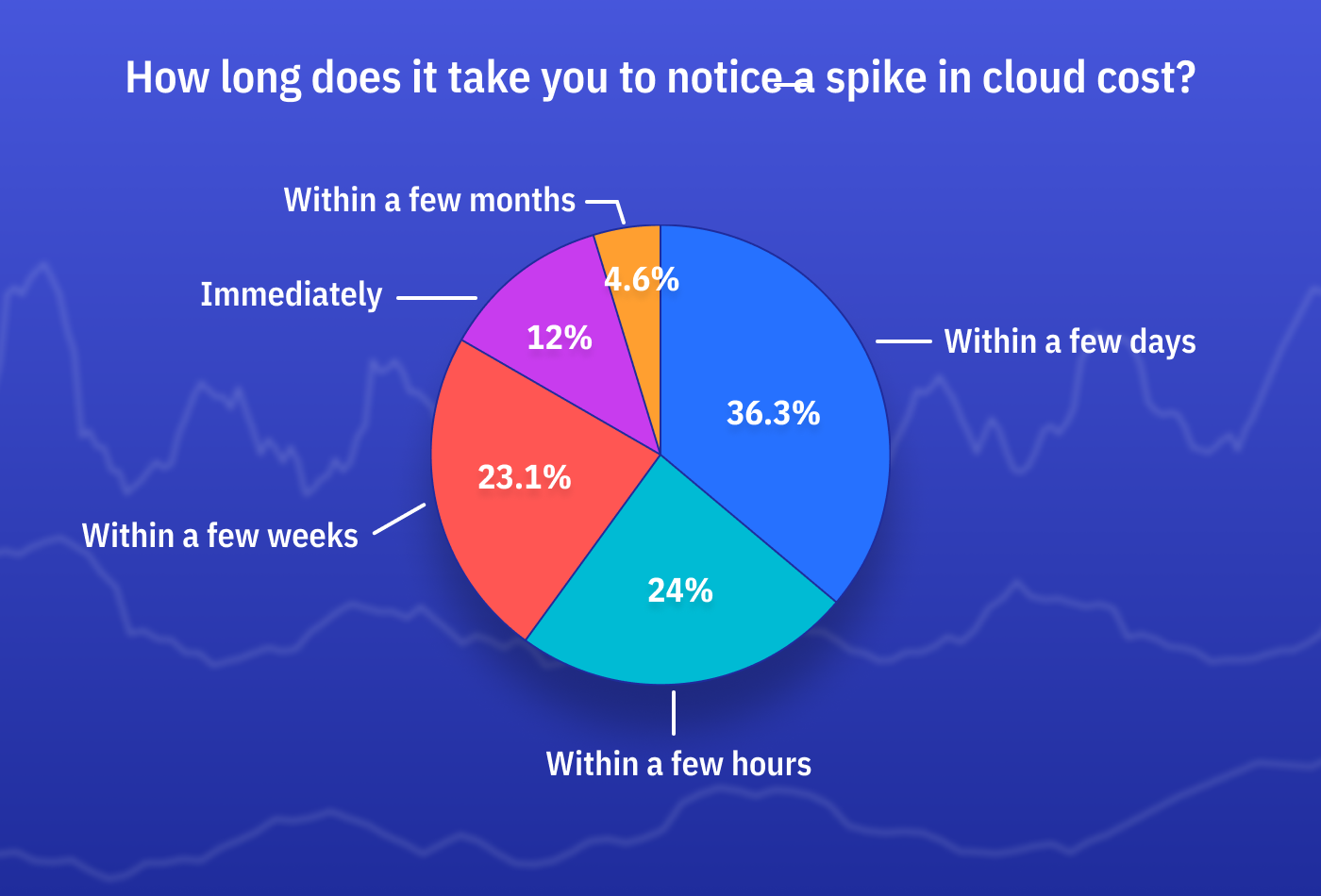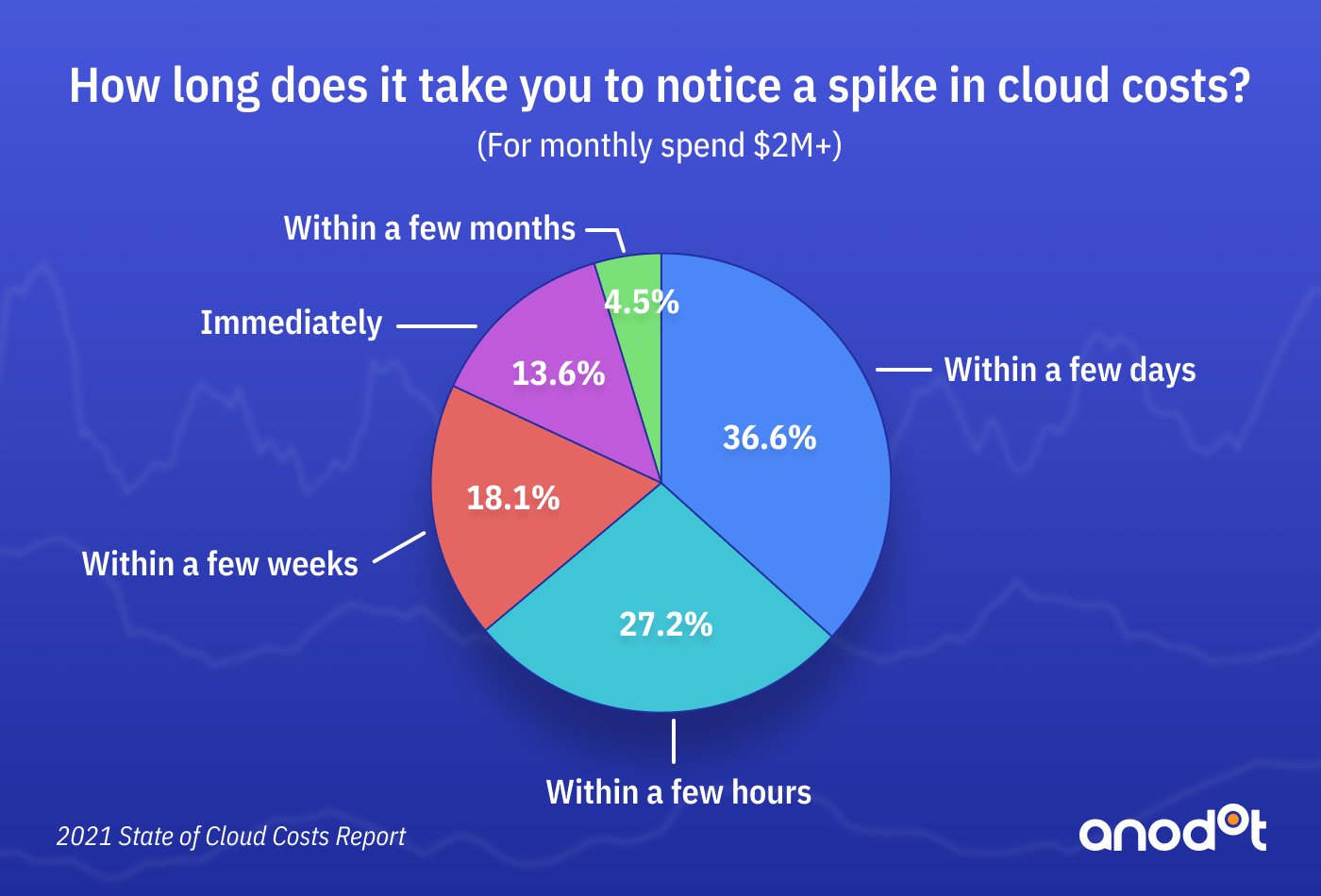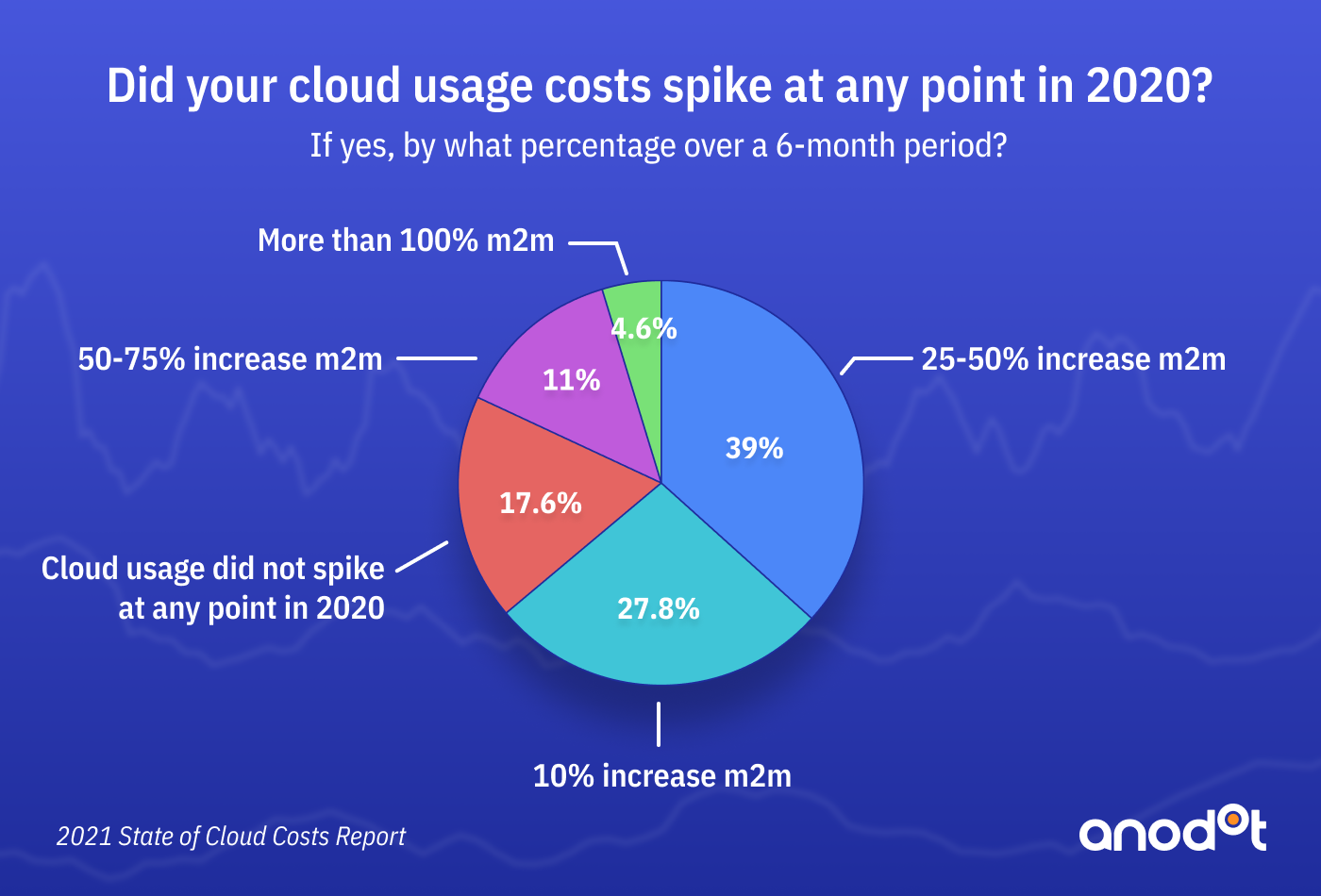The pandemic upended business for many or at the very least cast a grim shade of uncertainty, so, as many took to working from home, they also were commissioned with cutting waste.
Among the biggest sources of misspend in 2020 – cloud services. And remote work may have actually spurred the problem, as organizations migrate more applications to the cloud to support these workers.
For most organizations, cloud services and Software-as-a-Service represent a large and fast-growing share of their budgets. Cloud computing is projected to make up 14% of enterprise IT spending worldwide in 2024 – up from 9% in 2020, according to a recent report by research firm Gartner. This will continue a trend. The firm says that worldwide spending on public cloud services will grow 18% this year alone to a total of $304.9 billion, up from $257.5 billion in 2020.
Anodot surveyed more than 100 senior IT, finance, and operations leaders in spring 2021 to gauge how recent events have affected cloud usage.
See the 2021 State of Cloud Costs Report
64% of those surveyed say they don’t find incidents until days, weeks, or even months later. One in five of those companies spend more than $2 million annually on cloud services, and the financial impact can easily amount to hundreds of thousands in lost revenue.
Approximately 55% of those surveyed by Anodot say they have been surprised by cloud costs or had an incident where cloud costs suddenly spiked. That number jumps to roughly 77% for companies that spend more than $2 million annually.
So who discovers incidents first? About 50% of the time it’s the operations team, followed by engineering, then finance.
Kenshoo, an Israel-based provider of campaign management software and services, knows this struggle too well.
“Once you go to the cloud, it’s very easy to lose track,” said Danny Zalkind, DevOps group manager at Kenshoo. “Some of it is slow leaks and some of it could be human mistakes, misconfiguration. You could easily, in a couple of days or a week, pay large amounts of money for a simple misconfiguration.”
Many of these professionals didn’t just see occasional surges in cloud usage. 72% say their cloud bills increased 4-fold to 11-fold over a 6-month period last year.
For Kenshoo, the cloud bill is growing around 10-15% per month, which Zalkind allocates to both anomalous spikes and business growth. Their cloud spend has grown from around $150,000-$200,000 monthly to $500,000.
It doesn’t seem teams are failing to prioritize cloud cost monitoring. About 70 percent of team members say they check on cloud usage daily. More than 50 percent say their organization allocates a cloud usage budget per developer or per team. Results indicate a gap in detection despite investment in teams and clear budgeting.
As cloud costs take up an increasingly large percentage of companies’ IT spending in the move to digitalization, the speed of detection and remediation will be especially critical to financial planning. Using traditional approaches to business monitoring for cloud costs can take days as well as waste valuable time for the engineers who need to review dashboards.
Kenshoo says they were able to lower their mean time to detection and their monthly spend by using machine learning-based technology to more accurately automate monitoring and alerting. They are among the companies that are able to cut mean time to detection by 70% and identify cost-related issues within an hour, saving hundreds of thousands of dollars.
To see the full results, check out: 2021 State of Cloud Cost Report
For helpful tips, check out how Anodot’s DevOps team made several key changes to cut $360,000 in annual cloud spend.
Related Guides:
- Top 13 Cloud Cost Optimization: Best Practices for 2025
- Understanding FinOps: Principles, Tools, and Measuring Success
Related Products:
Start Reducing Cloud Costs Today!
Connect with one of our cloud cost management specialists to learn how Anodot can help your organization control costs, optimize resources and reduce cloud waste.








